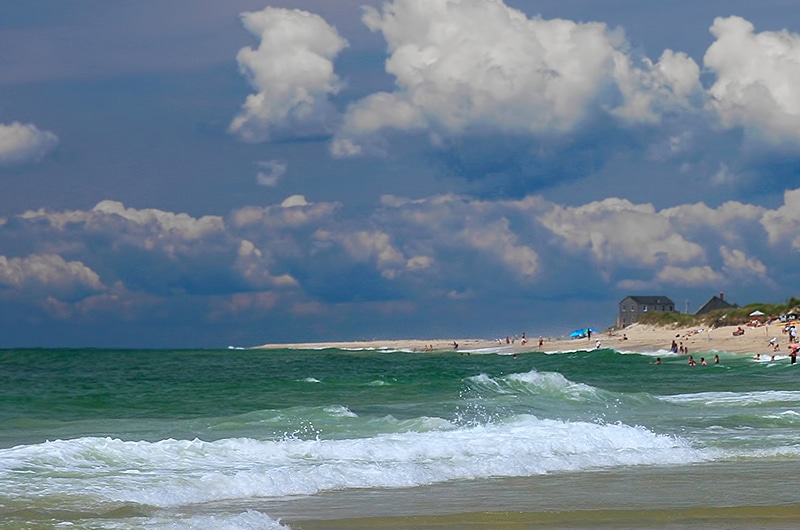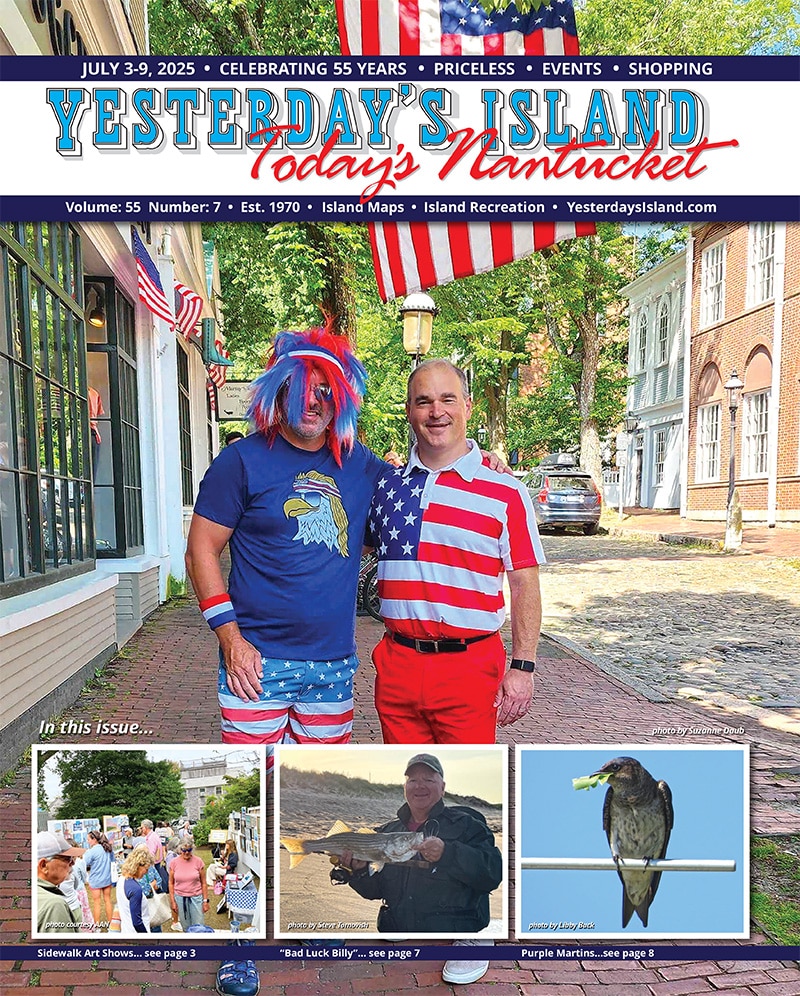by Advanced Sommelier Jenny Benzie
Coastal living invokes thoughts of bathing in the sun and times spent swimming in the ocean surf. Standing in line for ice cream, staying up late to admire the stars, and wearing a hat most days to shade from the sun are all part and parcel of summer on Nantucket. However, not all coastal conditions are created equal and neither are the libations that come from them. Sea-shanty worthy drinks are an expression of their watery sources, no matter how far and distant in between. Take a liquid adventure as we explore a handful of libations worthy of your next oceanic experience.
You are what you eat—or drink in this case—and wouldn’t it be nice to know that you are putting only the best ingredients in your body while also being eco-friendly?
Aloha to OCEAN ORGANIC VODKA from the beautiful island of Maui in the Hawaiian Islands. This Certified Organic vodka is the only one in the world made from organic cane sugar, making it naturally gluten free, and blended with deep ocean mineral water, to provide it with texture and flavor. This also means that it absolutely contains NO GMOs (genetically modified organisms), herbicides or pesticides to ensure the cleanest, most refreshing cocktail experience. At 80 proof (40% alcohol by volume) with 60% water, the high mineral content of the water imparts a unique character and high quality of pureness to the vodka. The patented package design is of an antique fishing float ‘ocean only’ artifact. It is angled to emulate the Earth’s axis. The weight of the glass conveys premium position, not only of what is inside the bottle, but of the mission behind the brand in respect to the ocean and creating an eco-conscious product.
OCEAN Vodka Laule’a (by Brian Connor): Place Ocean Vodka, strawberry, mint, ginger, lime and agave nectar in a shaker and muddle. Fill with ice and shake vigorously. Pour into rocks glass, top with coconut water and Prosecco. Garnish with frozen pineapple and mint sprig.
Set your spirit of exploration adrift with NAUTICAL AMERICAN GIN, made from a blend of 15 exotic botanicals. The key to what makes this gin stand apart is the discovery of a rare coastal botanical—the inspiration for the brand name— that gives the gin a subtle taste of sea salt. This Pacific Kombu botanical is a coastal vegetable that is rich in vitamins and minerals. It is blended with the more common juniper berries (required in all gin as the base ingredient), rosehips (high in vitamin c), the more common coriander seed, spearmint and lemongrass, along with a dash of other botanicals to round out the recipe. The distinctive aquamarine colored bottle design has a custom flat back package that makes it ideal for the bottle to stay stationary when traveling on a boat (or easy to strap it to the back of your bicycle when riding home from the liquor store). It also makes it easy to lay it down in a cabinet at home if you do not have much clearance, although this is not an overly tall bottle design.
NAUTICAL AMERICAN GIN Mari-Thyme (by Erin Henning): Muddle one thyme sprig and juice of ½ lemon in a cocktail shaker. Add gin, simple syrup, elderflower liqueur and ice. Shake well. Strain into a rocks glass filled with ice and top with soda. Garnish with remaining thyme sprig.
The storied history of Port production begins inland in the Douro Valley of northern Portugal, where the grapes are grown and harvested. The fermentation is stopped halfway through the process by the addition of a neutral grape spirit, resulting in a sweet wine that is higher in alcohol (around 18- 20%) than a typical table wine. After production, the wine was traditionally shipped down the Douro River to the seaport city of Porto at the mouth of the river, where the wine received its name. This is where much of the product was brought to market or for exporting to other European countries. Of the many well-known port houses, Ramos Pinto began in 1880 and found its fame for its innovative and enterprising marketing strategy by exporting to the Brazilian market. RAMOS PINTO RUBY PORT is a young blend, aged just three years in wine vats before being bottled. It is made from the indigenous grapes of Touriga Franca and Tinta Barroca and has a dense red color with strong, fruity aromas of cherry, blackberry and plum. It is typically served as a dessert wine, a perfect companion to blue cheese or cigars.
Perfect PORT Pairing: Wasik’s Blue d’Auvergne Cheese + Effie’s Malted Cocoa-Cakes
Whisky (or whiskey) can be made anywhere in the world. The highly sought after whiskies of Japan, Bourbon whiskey from Kentucky, American whiskey made by a winemaker, not to mention that the Canadians and Irish have been making it for decades as well. But if it’s not a whisky from Scotland, it’s NOT SCOTCH. Hence the name, NOTCH, Nantucket’s single malt whisky which was awarded the Trophy for Best Single Malt World Whiskies by the International Spirit Challenge in 2015. According to Nantucket lead distiller Randy Hudson, it’s not just the maritime history of our island that leads to the production of such a great spirit. The air here is of great quality and there is a clean environment about the island with lots of preserved open space. The distillate is produced on island and diluted with pure Nantucket water (no chlorine or fluoride) to the proper strength for bottling. He feels that the sum of all of these parts (and more) is what contributes to how well the whisky matures on our fair isle. The original bottling was priced at $888 for the 8-year-old, mainly because there was not much of it. The next release was the 12-year-old, priced at $350 a bottle. Recently released however, is the long awaited 15-year Single Malt Nantucket Island Whisky. Need a gift for someone who already has everything? Here is your answer.
Nantucket Island NOTCH Whiskey: Best shared with your closest companions and strangers you want to have as friends.
From coast to coast and sea to shining sea, there are numerous libations to enjoy along the way of your journey. Be sure to keep copious notes in your travel log for years of enjoyment well beyond when the last drop of the bottle has been consumed.



